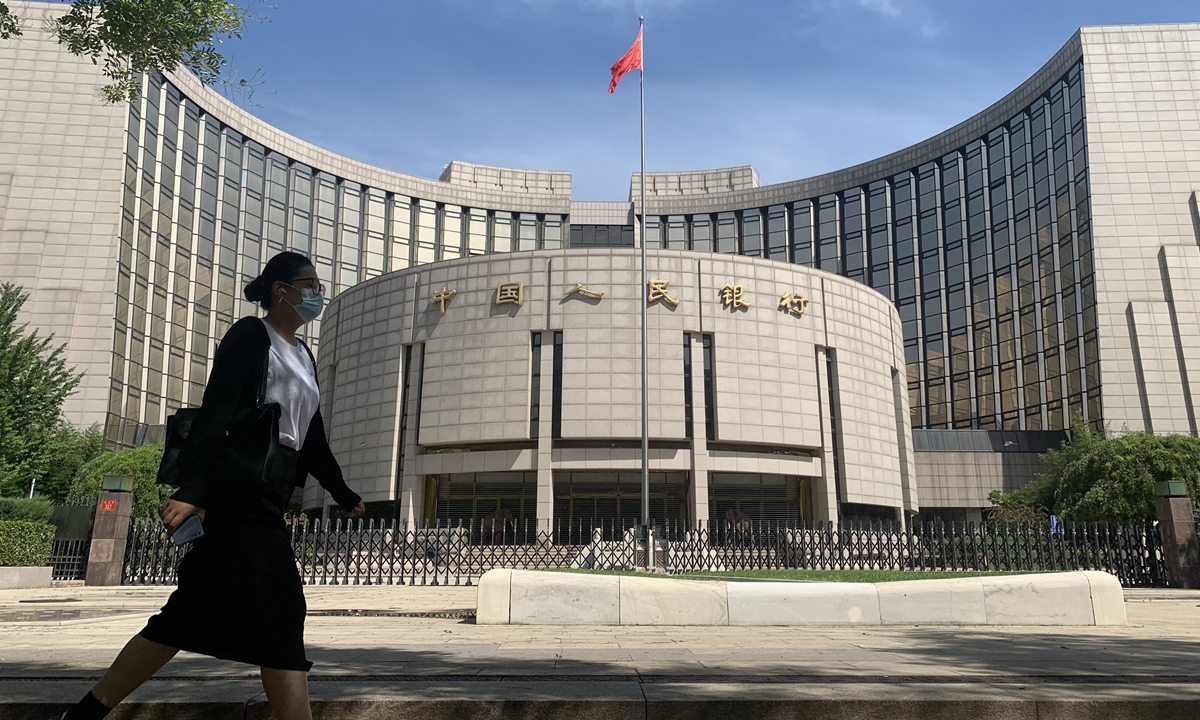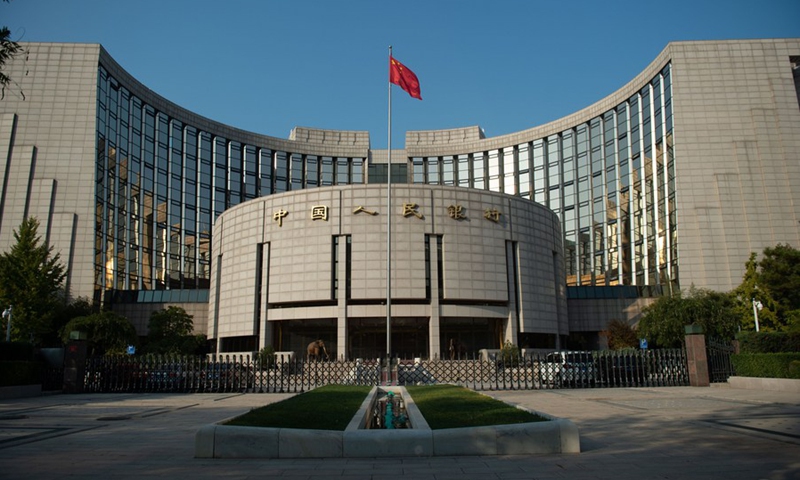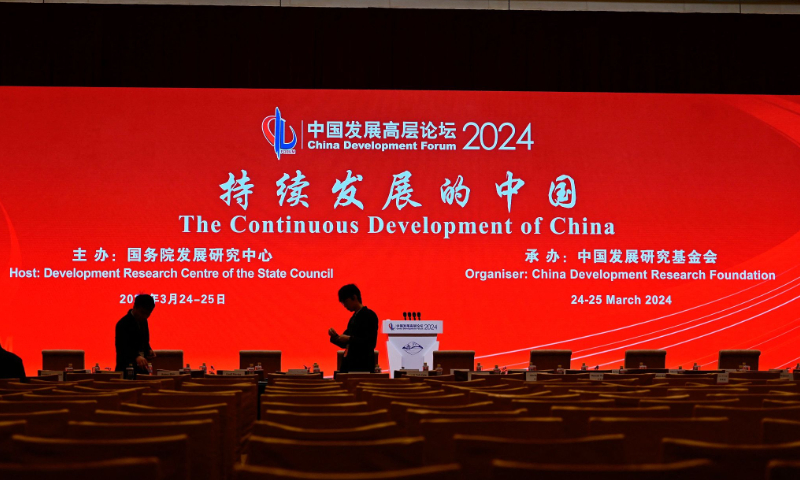China's newly added social financing still at historical high level in Q1: official

A view of the PBC building in Beijing Photo: VCG
Newly added social financing during the first quarter was still one of the highest in history, with an improved structure to better serve the development of the real economy, an official of the People's Bank of China (PBC), the central bank, told a press conference hosted by the State Council Information Office on Thursday, responding to questions about a year-on-year decline during the quarter.
China's newly added social financing stood at 12.93 trillion yuan ($1.79 trillion) in the first quarter, PBC data showed on April 12. The reading was down 1.61 trillion yuan from the same quarter in 2023.
Responding to worries that the decline may represent weak demand, Zhang Wenhong, a PBC official, said that a high base effect was behind the year-on-year contraction, and the reading was still at a relatively high level in historical terms.
In general, the volume of newly added social financing in the first quarter was basically aligned with economic growth targets and price expectations for this year, Zhang said, noting that the PBC is also attaching more importance to guiding more balanced loan growth from financial institutions and ensuring the support of credit growth to the real economy.
It also aims to avoid losing momentum for the rest of the year with an emphasis on the sustainable growth of credit, the official noted.
China's outstanding social financing stood at 390.32 trillion yuan at the end of March, up 8.7 percent year-on-year.
China's fiscal and monetary policies in the remainder of the second quarter may turn more expansionary, Xi Junyang, a professor at the Shanghai University of Finance and Economics, told the Global Times on Thursday, noting that the pace of newly added social financing in the first quarter was moderate but efficient.
He said that there is still space for policymakers to further slash interest rates due to low price levels, but emphasized the quality of lending needs to be further improved to make sure monetary support turns into concrete projects rather than lying idle.
The PBC's monetary policy options in the second quarter include further cuts in the reserve requirement ratio (RRR), aiming to improve social financing capabilities and promote the development of the real economy, Bian Yongzu, a senior industry research fellow and visiting scholar at Yale University, told the Global Times on Thursday.
Since the beginning of this year, the PBC has taken measures to ensure reasonable liquidity in the market.
The PBC lowered relending rates for the agriculture sector and small businesses, cut the RRR for financial institutions by 50 basis points (bps) and reduced the over-five-year loan prime rate by 25 bps in February.
Zhu Hexin, PBC deputy governor, noted at the same press conference that the rollout of monetary policy during the first quarter was bearing fruit and supporting the continued recovery of the broad national economy.
Zhu noted that there is still space for more monetary policy moves and the PBC will closely follow up and monitor policy effects and tap reserved tools at opportune times.


